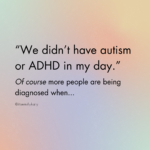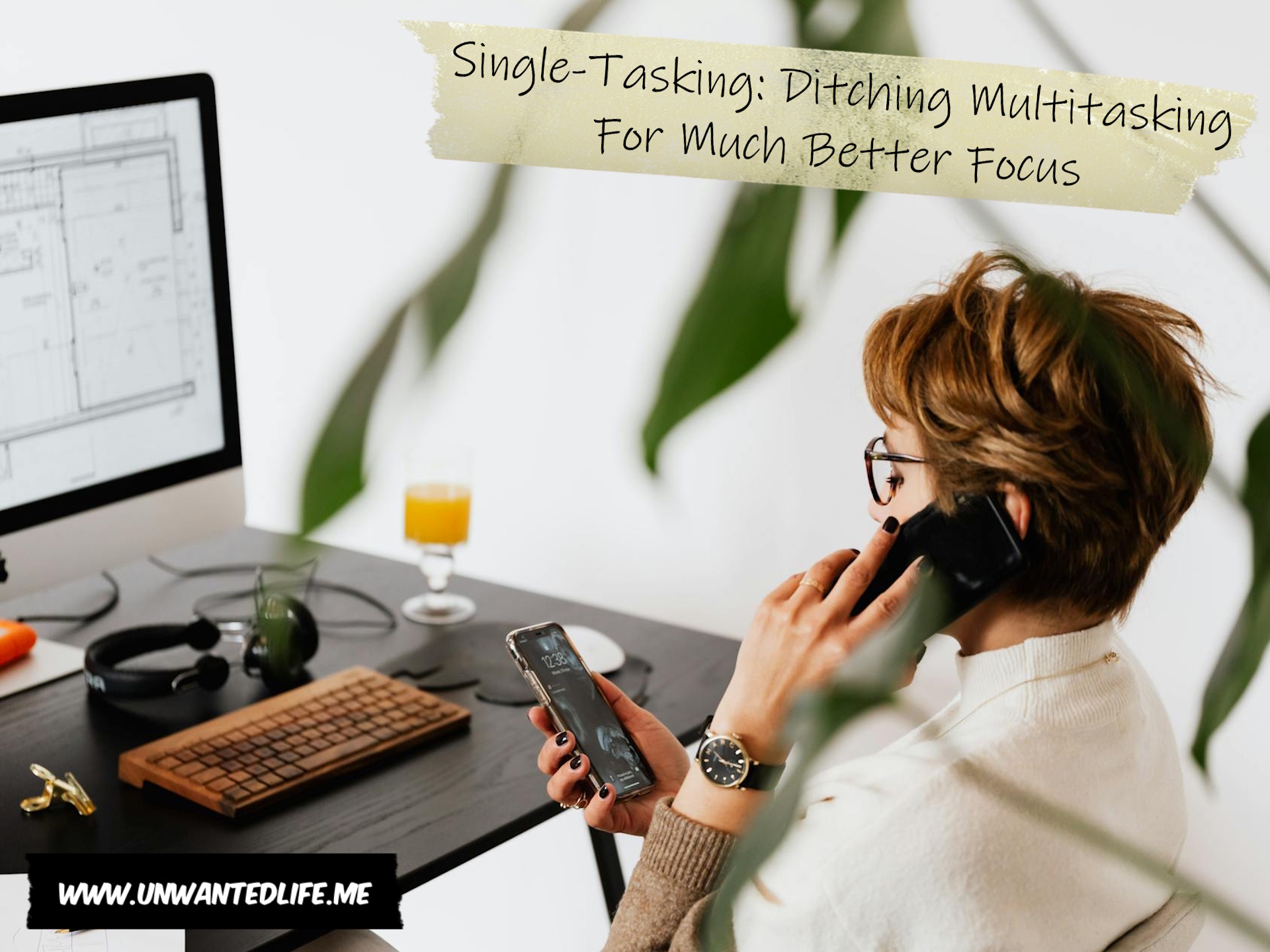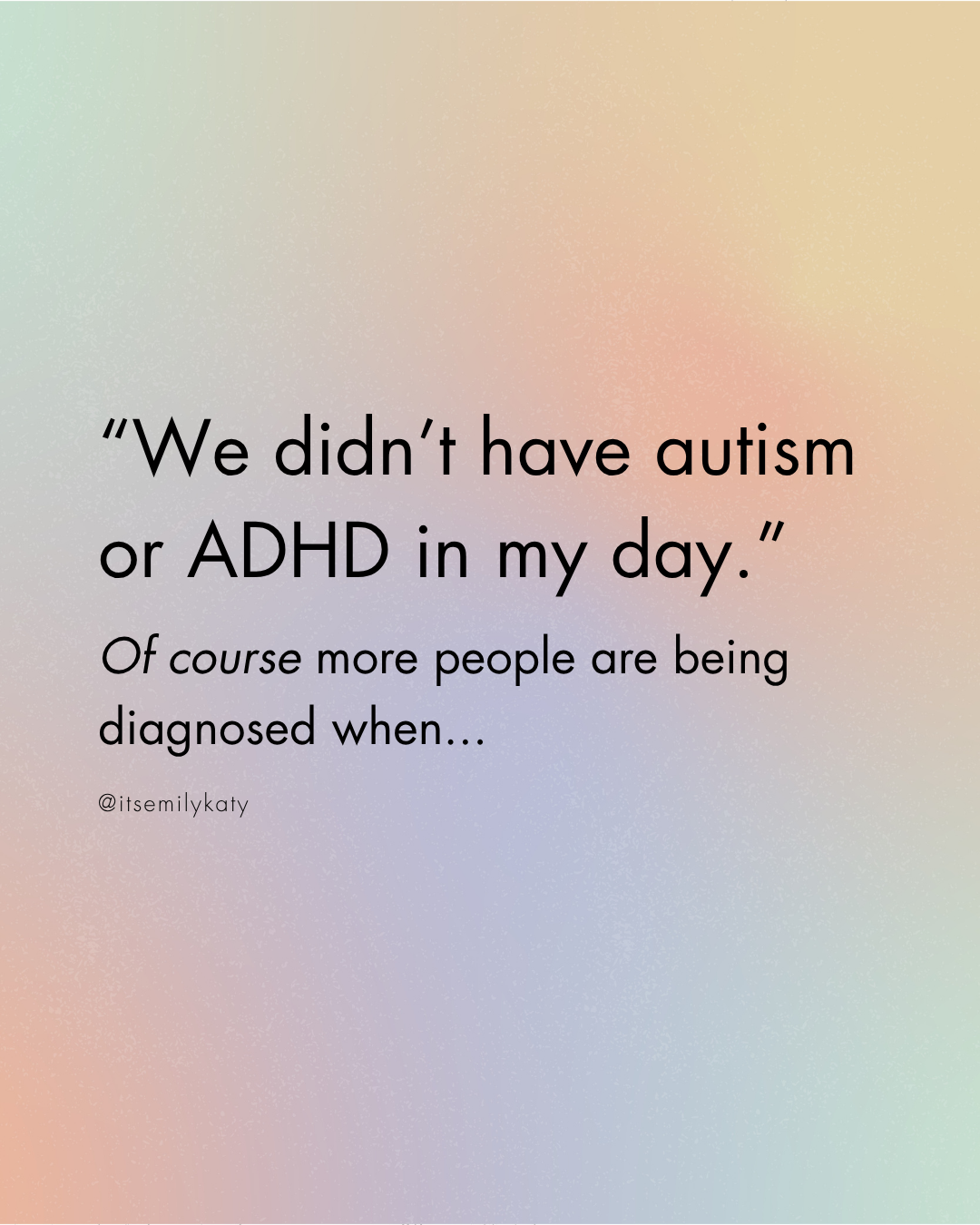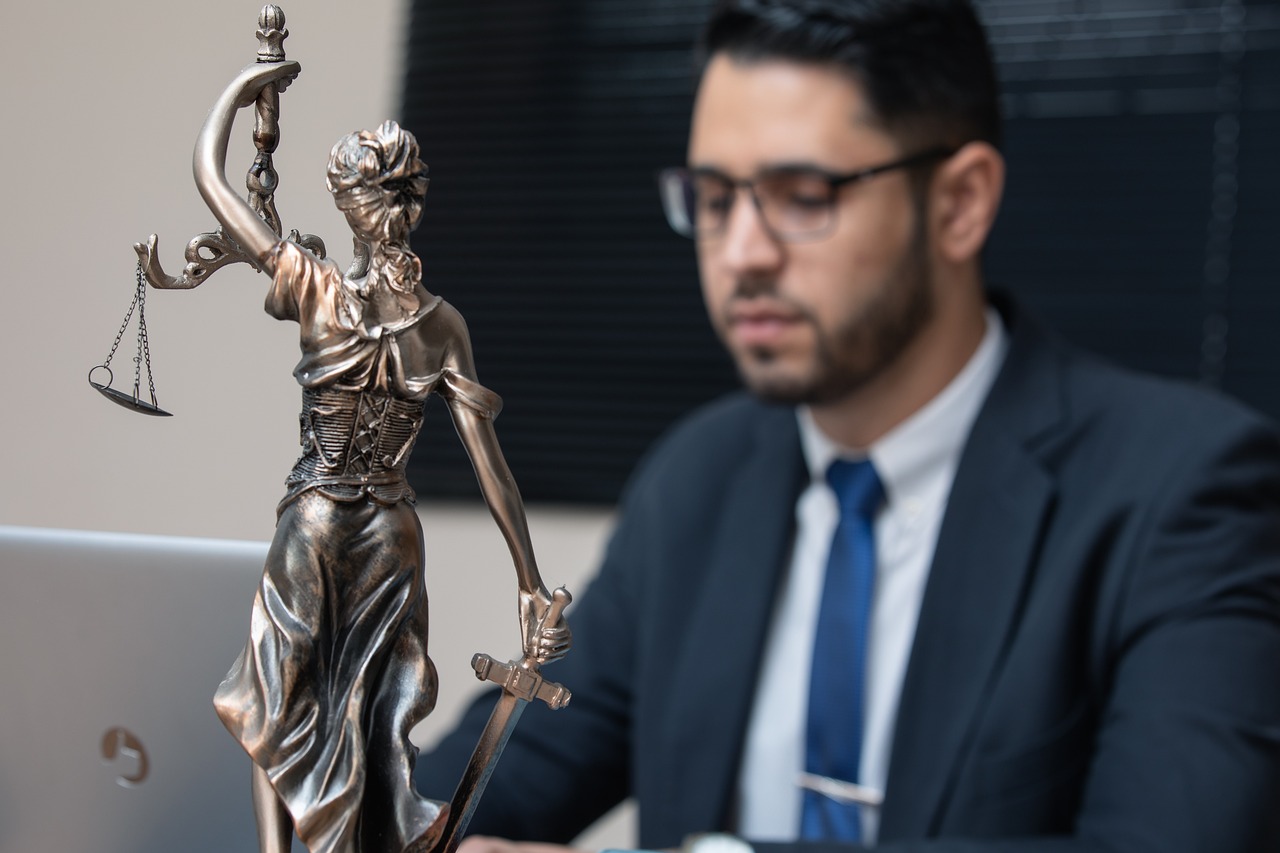I’ve been a sucker for multitasking, mainly because I find it hard to do nothing when there’s natural breaks in tasks, such as waiting for something to cook. I’ll often clean something in the kitchen during that time. However, that doesn’t always work out well in the end. Thus, this article will make the case for single-tasking. Let me know what you think in the comments section after you’ve read the article.
What Is Multitasking, And What Are The Pros And Cons Of This Approach
Multitasking can be understood to be two distinct types: task-switching and dual-tasking (Howard, Alipour, and Gutworth, 2025). Task-switching is where we focus on more than one task at a time, having to switch between those tasks back and forth repeatedly (Scott, 2023). We’re not always aware that we’re switching as we do this, but for our brains, we are.
Dual-tasking is where we perform two tasks simultaneously (MacPherson, 2018). This isn’t always a bad thing, it depends on the resources the simultaneous tasks require. For example, walking and talking are effortless, as one of those functions doesn’t require conscious effort. Reading and singing along to music, on the other hand, is a different story, as both activities require the same resources. In cases like that, both tasks will see a deterioration in our ability to perform them well.
Annoyingly, our modern workplaces expect us to multitask, causing us to shift between our responsibilities while simultaneously tackling multiple tasks and duties (Howard, Alipour, and Gutworth, 2025).
There is this idea that multitasking is a good productivity strategy, because of the belief that we’re doing more than one thing at a time, so that must mean we’re increasing our productivity (Scott, 2023). How does that now sound appealing?
However, imagine we’re attempting to multitask several tasks at the same time, such as talking on the phone, writing a report on our laptop, and checking on our lunch cooking in the kitchen at the same time. We may not realise it, but this can make tasks take longer because we’re constantly trying to refocus as we switch between tasks. Then there’s the drop in performance across all those tasks, where we miss details in the conversation, make mistakes as we’re typing, and maybe even end up burning our food. This is the big problem with multitasking, according to Trauma Research UK (2024).
The main issue with multitasking is that the more tasks we juggle, or if those tasks require the same resources, the more difficult it becomes (Howard, Alipour, and Gutworth, 2025). This will greatly reduce our productivity, performance, and efficiency (Scott, 2023) and lead to exhaustion and, eventually, burnout.
Is multitasking ever ok (Posey, 2024)? Of course it is, it just depends on the tasks in question. Like I said, when it comes to dual-tasking with tasks that don’t require conscious efforts (Scott, 2023) or use different resources, multitasking can be very useful. Stacking boxes while listening to music is probably an essential form of multitasking to avoid boredom, and eating and walking are often unavoidable, yet it is a great use of dual-tasking.
What Is Single-Tasking, And What Are The Pros And Cons Of This Approach
Single-tasking is where we focus solely on one task at a time (Howard, Alipour, and Gutworth, 2025). This allows us to have singular focus and dedication to that single task, which often yields superior precision (Liu and Yu, 2024). All thanks to not having to share cognitive resources as we switch or dual-wield tasks (Howard, Alipour, and Gutworth, 2025).
If a less stressful life, with better efficiency, and especially if details and concentration are going to matter, then single-tasking is the answer (Scott, 2023).
A study by Becker, Kaltenegger, Nowak, Weigl, and Rohleder (2023) found that multitasking, as well as being interrupted when working, triggers stress responses. Whereas, single-tasking doesn’t cause that stress response. This means there’s actual science that supports the argument for single-tasking being less stressful.
Multitasking can be a focus-killer and drains our energy, whereas single-tasking isn’t (Scott, 2023). Furthermore, according to Trauma Research UK (2024), single-tasking not only improves our quality of work but can enhance creativity and help us develop better quality relationships by being more present with our social support network.
Where single tasking would be less productive would be in the context of doing stuff like walking and eating, because they are two things that can be easily done at the same time. Any potential loss in performance doesn’t matter, and doing those one at a time could be inefficient. Another factor to consider is boredom. Would I rather write my blog articles in silence or while listening to music? With music every time, any effects it has on my performance are outweighed by the boredom of working in silence.

How To Get The Most Out Of Single-Tasking
Minimise distractions
To help us with our single-tasking efforts, it can be useful to try to minimise our distractions, as interruptions can cause stress (Becker, Kaltenegger, Nowak, Weigl, and Rohleder, 2023). Therefore, try to create an environment that’ll support our single-tasking efforts (Posey, 2024). Silencing our phones might be a good place to start, as notifications are likely to capture our attention.
Utilise “Chunking”
We all have a lot on our plates, but if we want to perform at our best or just want to work with less stress in our lives, then single-tasking is the way to go. To get the most out of single-tasking, we should use chunking (Scott, 2023). This is a time management strategy, whereby we break down all the tasks we need to do, put them in an order of our choosing and work through them one after the other.
Prioritise tasks
A good part of chunking, or just general time management, is to decide which tasks are most important and tackle them one at a time.
Set time limits
Allocating a specific amount of time to each task helps with our focus, but also because we can benefit from breaks. Consider a Pomodoro or an animedoro method, or any time management strategy that would work (Posey, 2024).
Summary
Both multitasking and single-tasking have their roles in our lives. Single-tasking may not be suitable for every situation, just like multitasking won’t be. It’s not an either-or situation, but rather a continuous choice about which is best for the job at hand. Thus, it’s worth considering both options, but for less stress in our lives, single-tasking might be the preferred choice when possible. Like with most things in life, we need to find the right balance for ourselves as individuals.
As always, leave your feedback in the comments section below. Also, please share your experiences with single-tasking and multitasking in the comments section below as well. Don’t forget, if you want to stay up-to-date with my blog, you can sign up for my newsletter below. Alternatively, click the red bell icon in the bottom right corner to get push notifications for new articles.
Lastly, if you’d like to support my blog, please find the PayPal and Ko-fi donation payment options below. Until next time, Unwanted Life readers.
References
Becker, L., Kaltenegger, H. C., Nowak, D., Weigl, M., & Rohleder, N. (2023). Biological stress responses to multitasking and work interruptions: A randomized controlled trial. Psychoneuroendocrinology, 156, 106358. Retrieved from https://www.sciencedirect.com/science/article/pii/S0306453023003360 and https://doi.org/10.1016/j.psyneuen.2023.106358.
Howard, M. C., Alipour, K. K., & Gutworth, M. B. (2025). Operationalizing a more comprehensive conceptualization of polychronicity: A consideration of single-tasking, task-switching, and dual-tasking. Personality and Individual Differences, 233, 112909. Retrieved from https://static1.squarespace.com/static/595931763e00bea5c501bd7a/t/6706aeb941cfb67bdf9fb46b/1728491193586/16.8_HowardAlipourGutworth_2025_PID.pdf.
Liu, D., & Yu, Y. (2024). Mt2st: Adaptive multi-task to single-task learning. arXiv preprint arXiv:2406.18038. Retrieved from https://arxiv.org/pdf/2406.18038 and https://doi.org/10.48550/arXiv.2406.18038.
MacPherson, S. E. (2018). Definition: Dual-tasking and multitasking. Cortex, 106, 313-314. Retrieved from https://www.pure.ed.ac.uk/ws/portalfiles/portal/70009537/MacPherson_2018_Definition_Dual_Tasking_and_Multitasking_.pdf.
Posey, J. (2024, April). Single-Tasking: mastering the art of deep, productive work. Motion. Retrieved from https://www.usemotion.com/blog/single-tasking.
Scott, E. (2023, December). Single-Tasking for productivity and stress management. Verywell Mind. Retrieved from https://www.verywellmind.com/single-tasking-for-productivity-and-stress-management-3144753.
Trauma Research UK (2024, August). Why Single-Tasking is Better than Multitasking. Trauma Research UK. Retrieved from https://traumaresearchuk.org/blog/why-single-tasking-is-better-than-multitasking.










